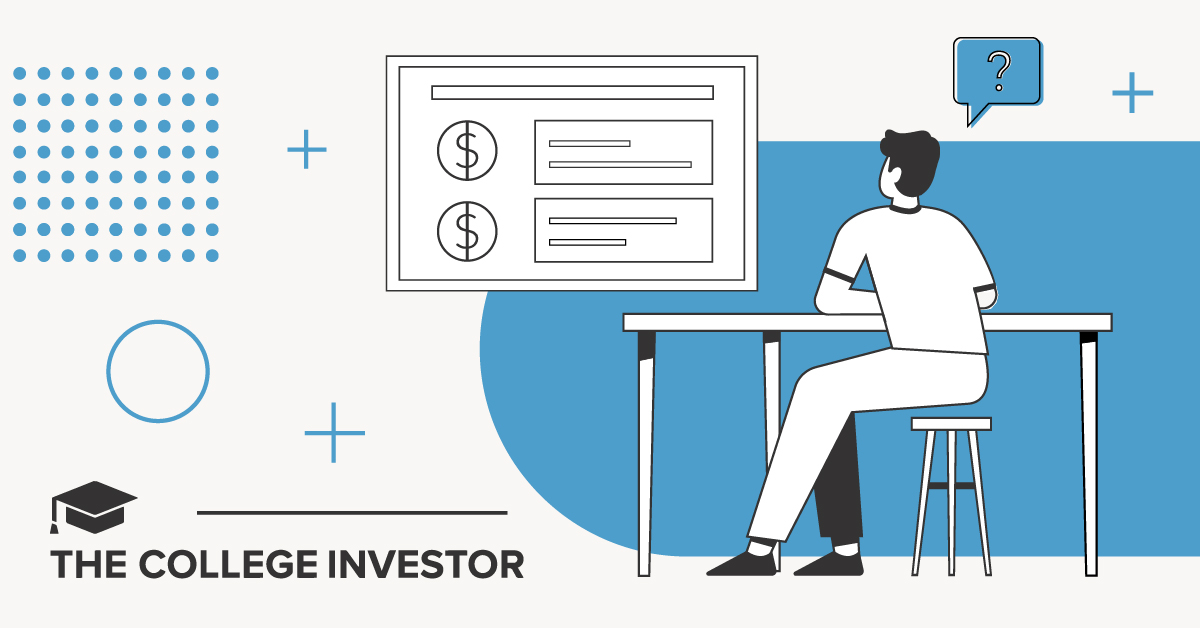Many or all of the products featured here may be from our partners who compensate us. This doesn’t influence our evaluations or reviews. Our opinions are our own. Investing information is for educational purposes only. Learn more here. Advertiser Disclosure There are thousands of financial products and services out there, and we believe in helping you understand which is best for you, how it works, and will it actually help you achieve your financial goals. We’re proud of our content and guidance, and the information we provide is objective, independent, and free. But we do have to make money to pay our team and keep this website running! Our partners compensate us. TheCollegeInvestor. com has an advertising relationship with some or all of the offers included on this page, which may impact how, where, and in what order products and services may appear. The College Investor does not include all companies or offers available in the marketplace. And our partners can never pay us to guarantee favorable reviews (or even pay for a review of their product to begin with). For more information and a complete list of our advertising partners, please check out our full Advertising Disclosure. TheCollegeInvestor. com strives to keep its information accurate and up to date. The information in our reviews could be different from what you find when visiting a financial institution, service provider or a specific product’s website. All products and services are presented without warranty. Key Points Subsidized loans save you money because the government pays your interest while you’re in school. Unsubsidized loans are open to nearly all students but start accruing interest immediately. Subsidized loans are only offered to undergraduates with financial need. As getting a college degree gets more expensive by the year, more and more students are relying on federal student loans to keep the dream alive. And when you get your award letter you might see listings for both subsidized and unsubsidized student loans. However, all the language that is used to describe the different types of loans available to you can sound like coded jargon, yes? In this post, we are going create a dent in that cloud of confusion. Today we’ll talk about the differences between the terms “Subsidized” and “Unsubsidized student loans” when it comes to the Federal Direct Student Loan Program. The William D. Ford Direct Loan Program is the largest loan program offered by the United States Department of Education. It’s basically the “law” that defines what can and can’t be done with student loans. The Subsidized and Unsubsidized loans are two of the four types of Direct Loans. These are the most common types of loans that undergraduates will get. Let’s break down what they mean, what you need to know, and options if you need to borrow more. Subsidized Student Loans If you qualify for Federal Direct Subsidized Student Loans, you should definitely take advantage, as they are one of the best student loans you can get. Direct Subsidized Loans are available to undergraduate students who have demonstrated financial need. The amount you can borrow is determined by your school. The loan amount will not exceed your financial need. The US Department of Education will pay the interest on your loan while you are in school at least half time, during the first six months after you leave school (the grace period) and/or during an approved deferment. Unsubsidized Student Loans Direct Unsubsidized are available to undergraduate and graduate students. There is no need to demonstrate financial need. The school you attend will determine your loan amount based on your financial need and other forms of financial aid you might be receiving. Unlike the Subsidized program, you are responsible as a student for paying interest on your loan throughout your time in school and after you leave. (this is why this particular loan is “unsubsidized”). Any unpaid interests will be added to the principal. Who Is Eligible For Direct Loans? There are several factors to be aware of when it comes to qualifying for Direct Student Loans. There are also limits to how much you can borrow with Direct student loans. In order to qualify for any Federal Student Loan program, you need to be US Citizen or Permanent Resident and have a valid social security number. You must have been accepted and be enrolled in at a school that participates in the Direct Loan Program at least half-time. If you are an undergraduate, you qualify both for the Subsidized and Unsubsidized Loans. As a graduate student, you only qualify for Unsubsidized Loan. In order to continue receiving funds, you need to continue to show satisfactory academic progress. You must not already be in default of another federally-funded student loan If you determine from the above criteria that you are eligible, you would then move on to fill out the Free Application for Federal Student Aid (FAFSA®). Something to note: Most males students need to be registered with the Selective Service in order to receive Federal Aid. How Much Can You Borrow? There are different borrowing limits depending on if you’re a dependent student or independent student. The limits also change based on what year of school you’re in. If the amount your school determines is more than you actually need, you can also borrow less money something that will come in handy if it is your goal to pay off your student loans faster. When your loan is awarded, it will be sent directly to your school who will then apply the money to your school account to pay tuition and fees. Here’s the current student loan borrowing limits: Year Of School Dependent Student Independent Student Note: All graduate and professional students are considered independent students. Also, graduate and professional students aren’t eligible for subsidized loans. These loans also different than the Grad PLUS loan program, which was eliminated starting in July 2026. There is also a total loan limit you have to follow: Dependent Students: $31,000, with no more than $23,000 subsidized Independent Students: $57,500 for undergraduates, with no more than $23,000 subsidized Graduate Students: Starting in 2026, $100,000 for graduate students. Prior to June 2026, the aggregate cap was $138,500. Professional Students: Starting in 2026, $200,000. Prior to June 2026, the aggregate cap was $138,500. How Much Time Do You Have To Pay Off Your Direct Loans? With the Unsubsidized student loan, once you have graduated from school, you have a six-month “grace period” where you don’t necessarily have to make payments on your loan although you will have to pay any interest you accrued on the amount you borrowed. In most cases, Subsidized student loan borrowers will not have to worry about payments until the grace period is over. Your repayment period begins a day after the grace period ends this holds both for Subsidized and Unsubsidized student loan borrowers. Because you absolutely do not want to miss when your repayment begins, it is important that you communicate clearly with your loan servicer to get details the specific date your repayment period starts, how much you need to be paying and the methods of payments. If for some reason, you are unable to pay the interest during the six-month grace period (under the Unsubsidized program) the interest amount will be capitalized. This means that the interest amount will be added to the principal which can potentially increase the amount you have to pay each month. Generally you will have between 10-25 years to pay off your student loans. If you decide to consolidate your loans using the Direct Consolidation Program this time period is extended up to 30 years. For both the Subsidized and Unsubsidized loans, you have the opportunity to use income-based repayment programs. What If You Need To Borrow More? Many people see those subsidized and unsubsidized student loan limits for undergraduates and don’t know how they will afford to pay for college. And that’s a rational fear if you were planning to borrow the full cost of college. But remember, paying for college is a pie and there are a lot of different slices to choose from. For the full breakdown of the “best” way to pay for college, check out this article: The Best Way To Pay For College. If you’re already exhausted other options, and know your ROI on education, then you can look at private loans. We recommend students shop and compare private loan options before taking them out. Credible is an excellent choice because you can compare about 10 different lenders in 2 minutes and see what you qualify for. Check out Credible here. We also have a full comparison tool on the Best Private Loans To Pay For College here. Key Takeaways If you are an undergraduate, your best option between these two loans is the Direct Subsidized Loan. If you can borrow less on your loan, do it. You will have less to pay later. The Department of Education will assign you a loan servicer once your loans are disbursed. Make sure you know the contact information of your loan servicer and stay on top of any information they send you regarding repayment. Take advantage of income-based repayment programs available to you. We would love to hear your thoughts in the comments! Editor: Clint Proctor Reviewed by: Chris Muller Robert Farrington is the founder of The College Investor and is widely recognized as one of the nation’s leading voices on student loan debt and saving for college. He holds an MBA from UC San Diego Rady School of Management and has spent over 15 years researching, writing, and advising on student loans, 529 plans, financial aid programs, and saving and investing for young professionals. Robert has been featured in the The New York Times, The Wall Street Journal, The Washington Post, NBC News, and Forbes, where he has been a regular personal finance contributor for over a decade. His work combines both professional expertise and personal experience he successfully navigated his own student loan repayment journey and has helped thousands of readers do the same. He is committed to making the intersection of personal finance and education transparent and accessible. You can learn more about Robert on the About Page or on his personal site RobertFarrington. com. Please Share And Support.
https://thecollegeinvestor.com/20485/understanding-subsidized-vs-unsubsidized-student-loans/
Subsidized vs. Unsubsidized Student Loans



